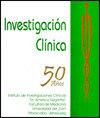Neurological manifestations associated with SARS-CoV-2 infection: an updated review.
IF 0.1
4区 医学
Q4 MEDICINE, RESEARCH & EXPERIMENTAL
引用次数: 1
Abstract
SARS-CoV-2 is a single-stranded RNA virus that belongs to the group of seven coronaviruses that affect humans, and its infection causes the COVID-19 disease. The association between the COVID-19 condition and risk factors of neurological manifestations is unclear to date. This review aims to update the main neurological manifestations associated with SARS-CoV-2 disease. First, we present the hypothesis of the neuroinvasion mechanisms of SARS-CoV-2. Then, we discuss the possible symptoms related to patients with COVID-19 infection in the central and peripheral nervous systems, followed by the perspectives of diagnosis and treatment of possible neurological manifesta-tions. The hypothesis of the neuroinvasion mechanism includes direct routes, as the virus crosses the blood-brain barrier or the ACE2 receptor pathway role, and indirect pathways, such as malfunctions of the immune system and vascular system dysregulation. Various studies report COVID-19 consequences, such as neuroanatomic alterations and cognitive impairment, besides peripheral condi-tions, such as anosmia, ageusia, and Guillain Barré Syndrome. However, the het-erogeneity of the studies about neurologic damage in patients after COVID-19 infection precludes any generalization of current findings. Finally, new studies are necessary to understand the adequate diagnosis, therapeutic method of early treatment, and risk group of patients for neurological manifestations of COVID-19 post-infection.与SARS-CoV-2感染相关的神经学表现:最新综述
SARS-CoV-2是一种单链RNA病毒,属于影响人类的七种冠状病毒,其感染可导致COVID-19疾病。迄今为止,COVID-19病症与神经系统表现危险因素之间的关联尚不清楚。本综述旨在更新与SARS-CoV-2疾病相关的主要神经学表现。首先,我们提出了SARS-CoV-2的神经侵袭机制假说。然后,我们讨论了与COVID-19感染患者相关的中枢和周围神经系统可能出现的症状,以及可能出现的神经系统表现的诊断和治疗观点。神经入侵机制的假设包括直接途径,如病毒穿过血脑屏障或ACE2受体途径的作用,以及间接途径,如免疫系统功能障碍和血管系统失调。各种研究报告了COVID-19的后果,如神经解剖改变和认知障碍,以及嗅觉丧失、老年痴呆和格林-巴勒综合征等周围疾病。然而,关于COVID-19感染后患者神经损伤的研究的异质性排除了目前研究结果的普遍化。最后,有必要开展新的研究,以了解COVID-19感染后神经系统症状的充分诊断、早期治疗的治疗方法和患者的风险群体。
本文章由计算机程序翻译,如有差异,请以英文原文为准。
求助全文
约1分钟内获得全文
求助全文
来源期刊

Investigacion clinica
MEDICINE, RESEARCH & EXPERIMENTAL-
CiteScore
0.20
自引率
50.00%
发文量
2
审稿时长
>12 weeks
期刊介绍:
Estudios humanos, animales y de laboratorio relacionados con la investigación clínica y asuntos conexos.
 求助内容:
求助内容: 应助结果提醒方式:
应助结果提醒方式:


